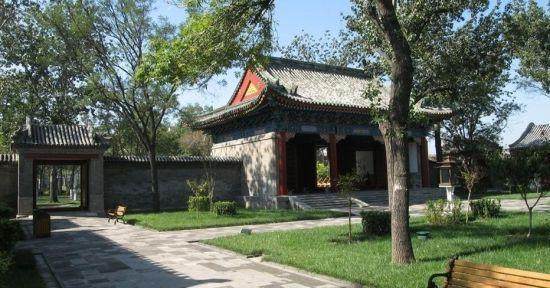
The Imperial Garden of the Yongle Era
A Multifaceted Oasis in the Forbidden City
The Imperial Garden, nestled within the heart of Beijing's Forbidden City, stands as a testament to the grandeur and multifaceted nature of Ming Dynasty design. Constructed in 1420, during the reign of the Yongle Emperor, the garden served not merely as a verdant retreat for the emperor and empress, but also as a space for spiritual contemplation, physical invigoration, scholarly pursuits, and quiet reflection.
A Sanctuary for Relaxation and Recreation
The Imperial Garden was envisioned as an oasis of tranquility amidst the bustling activity of the palace. Its carefully manicured landscape, punctuated by vibrant flora and fauna, provided a welcome respite from the rigors of court life. Meandering pathways, invitingly shaded by graceful trees, led to secluded pavilions and picturesque bridges, offering picturesque views and moments of serene contemplation. The garden's beauty, a harmonious blend of natural elements and human artistry, served to soothe the soul and inspire creativity.
A Sacred Space for Imperial Ritual
Beyond its aesthetic appeal, the Imperial Garden held deep spiritual significance. It was within this sacred space that the emperor, as the Son of Heaven, would perform important rituals and ceremonies. These included offerings to the gods for bountiful harvests and the well-being of the empire, as well as ceremonies honoring ancestors and seeking their guidance. The garden, with its connection to the cosmos, served as a vital link between the earthly realm and the celestial sphere.
An Arena for Physical and Mental Well-being
The Imperial Garden was also designed to promote physical fitness and mental acuity. Open courtyards provided ample space for practicing martial arts, while the garden's serene atmosphere offered a conducive environment for meditation and contemplative practices. The rhythmic flow of water features and the gentle rustling of leaves created a sense of tranquility, fostering inner peace and focus.
A Repository of Knowledge and Learning
The pursuit of knowledge was highly valued during the Ming Dynasty, and the Imperial Garden reflected this intellectual spirit. Pavilions within the garden housed extensive libraries, stocked with a wealth of books on diverse subjects such as history, philosophy, literature, and the arts. These tranquil spaces provided the emperor and his court with an ideal environment for scholarly pursuits, fostering intellectual discourse and the expansion of knowledge.
Conclusion
The Imperial Garden of the Yongle Era stands as a captivating microcosm of the Ming Dynasty, embodying the era's appreciation for beauty, spirituality, intellectual curiosity, and physical well-being. More than just a garden, it served as a multifaceted space where the emperor could fulfill his roles as a ruler, spiritual leader, scholar, and patron of the arts. Its legacy continues to inspire awe and wonder, offering a glimpse into the rich tapestry of imperial Chinese culture.
Q&A
Q1: What was the primary purpose of the Imperial Garden?
A1: While the Imperial Garden served as a place of relaxation and aesthetic enjoyment for the emperor and empress, it also hosted important rituals, provided space for physical activity and meditation, and housed libraries for scholarly pursuits.
Q2: What elements within the garden contributed to its sense of tranquility and spiritual significance?
A2: Carefully designed landscapes, meandering pathways, secluded pavilions, water features, and the integration of natural elements all contributed to the garden's serene and spiritual atmosphere.
Q3: How did the Imperial Garden reflect the intellectual values of the Ming Dynasty?
A3: The presence of libraries within the garden, stocked with books on diverse subjects, highlighted the importance placed on learning and intellectual exploration during the Ming Dynasty.